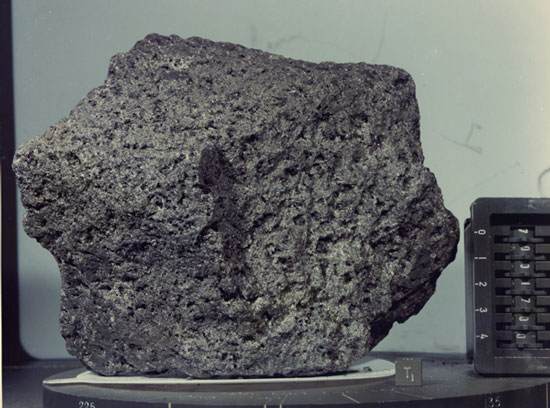Journey to find the moon stone
A lost moon stone from the 70s of the last century, but US officials only knew it when a man sold a piece of stone on the Internet.
In May, US officials caught a 74-year-old woman selling a piece of moon stone at a restaurant in Lake Elsinore, Riverside County, California, USA. The buyer is an agent of the US Aerospace Agency (NASA). Then they interrogated Joann Davis, the old lady's name, for two hours.
But five months later, the old woman has not yet been charged and it seems that NASA has difficulty getting her to court.
Davis affirmed that the stone was in her possession legally, because that was what her ex-husband left when he died in 1986. She told Neil Armstrong, the first astronaut to set foot. on the moon, she gave a piece of stone to her husband in the 1970s. Back then Davis worked as a dictionary editor, and her husband was an engineer at North American Rockwell - a spacecraft manufacturer for NASA in the era of Apollo.
Armstrong's affidavit, meanwhile, shows that he never gave anything to the moon to others.

The story attracted the attention of public opinion even though the piece of stone is only smaller than rice grain. For years, NASA has been chasing people selling specimens that astronauts took from the moon during Apollo flights. These physical samples are considered to be the property of the US government, so every individual cannot be sold.
NASA has handed over several hundred acres of land and rock on the moon to US states, states and individuals with high social status but Washington still considers them to be US owned. NASA Inspector General will arrest those who intend to sell them.
Norman Conley, a NASA agent, said that Davis used to go to the Internet on May 10 to find someone to buy a piece of ice with a heat-resistant piece of metal protecting Apollo 11 when it returned to Earth after the flight. first put people on the moon in 1969.
'I've been looking for buyers online for months' , Mrs. Davis admitted.
Agent Conley impersonated someone who wanted to buy a stone and called Mrs. Davis's home several times. In the conversations women admitted she could only sell stones at the black market, but could not trade publicly. Finally, she agreed to sell the piece of stone for $ 1.7 million. Denny's restaurant in Lake Elsinore, California is chosen as a transaction point. She hopes that after the transaction is done, she will have an inheritance for her three children.
Joseph Gutheinz, a lecturer at the University of Phoenix in the US and once a NASA investigator, said that judging Mrs. Davis was difficult. According to him, NASA sometimes appears careless in preserving material from the moon. For example, in many cases the astronaut's costumes were flushed with water, causing the dust of the moon to perpetuate on them forever. Large stones from the moon are stored and monitored strictly, but a small number of small pieces of rock have been taken out by NASA engineers themselves.
'My view is that no one is allowed to own the stone from the moon. They are the common property of the entire people. But if we don't preserve the rock patterns well, I can't blame Mrs. Davis , 'Gutheinz said.
American astronauts took about 2,200 specimens from the moon - including rock, gravel, sand, and dust - during the Apolo fleet's flights from 1969 to 1972. Their total weight was about 378kg.
- The biggest falling stone falls from the moon and is sold
- The scientific world has found the exact age of the Moon
- Journey to conquer the moon
- Neil Armstrong almost died before landing on the moon
- Go to Dong Van stone plateau to see the gray paradise
- Moon Stone in the former Soviet space mission sold for $ 1 million
- Simulate the journey to Mars
- Does the Moon have its own moon? And you will be surprised with its name!
- Visitors to the Moon face unpredictable health risks
- The moon was formed 4.36 billion years ago
- Find the oldest stone ax in the world
- Quiz: Find the true Moon between 8 frying pan and 1 Moon
 Van Allen's belt and evidence that the Apollo 11 mission to the Moon was myth
Van Allen's belt and evidence that the Apollo 11 mission to the Moon was myth The levels of civilization in the universe (Kardashev scale)
The levels of civilization in the universe (Kardashev scale) Today Mars, the sun and the Earth are aligned
Today Mars, the sun and the Earth are aligned The Amazon owner announced a secret plan to build a space base for thousands of people
The Amazon owner announced a secret plan to build a space base for thousands of people